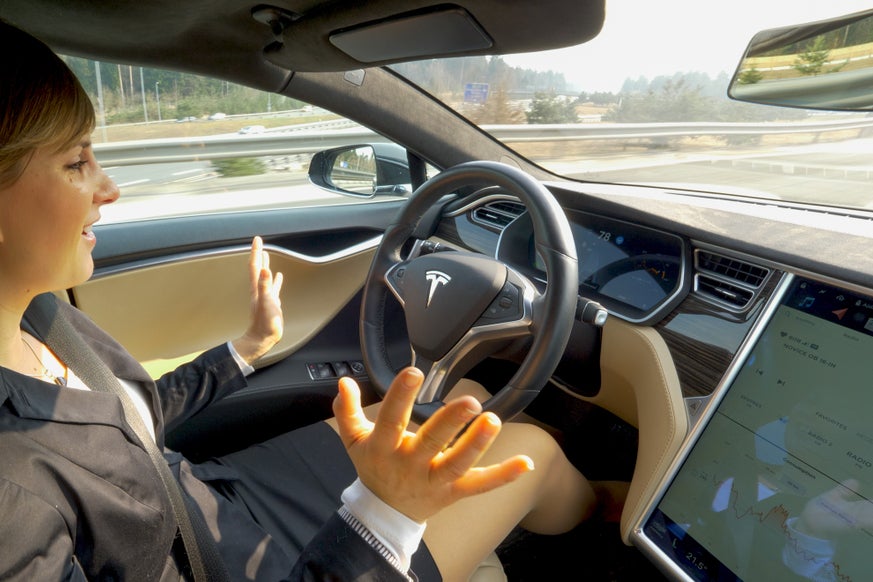Elon Musk’s FSD Praise Sparks Controversy: The State of Tesla’s Autopilot
In recent times, the automotive world has been abuzz with discussions around Tesla’s Full Self-Driving (FSD) technology. Following Elon Musk’s enthusiastic endorsement of the system’s capabilities, particularly its ‘unsupervised’ driving features, investor Ross Gerber has raised critical questions about its reliability, especially under adverse conditions. This clash underscores a wider debate concerning the readiness of autonomous driving systems for real-world applications. Are we truly prepared to embrace this technological leap, or should we tread carefully?
Understanding Tesla’s Full Self-Driving (FSD) Technology
At its core, Tesla’s FSD aims to enable vehicles to navigate and operate without human intervention. It incorporates a plethora of sensors, cameras, and AI algorithms designed to interpret the vehicle’s surroundings and make driving decisions. However, while the technology is groundbreaking, it is essential to recognize the limitations that still exist.
The Evolution of Tesla’s Autopilot and FSD
Autopilot was introduced as an advanced driver-assistance system (ADAS) in 2015, primarily aimed at enhancing safety and convenience. Over the years, Tesla has progressively rolled out updates to its FSD software, which promises capabilities such as:
- Automatic lane changes
- Traffic-aware cruise control
- Navigate on Autopilot
- Autopark
- Summon feature
Musk has often touted these features as steps towards a fully autonomous vehicle, but the term “Full Self-Driving” has led to some misconceptions about the current capabilities of the technology.
The Controversy Over FSD’s Reliability
Elon Musk’s enthusiastic promotion of Tesla’s FSD has sparked a significant debate within the industry. While many hail the innovation as a breakthrough, critics like Ross Gerber have expressed concerns regarding its safety and effectiveness in challenging scenarios such as inclement weather or complex urban environments.
Ross Gerber’s Perspective
Investor Ross Gerber, a vocal advocate for Tesla, has raised alarms about the FSD’s performance. He emphasizes that while the technology shows promise, there are significant gaps in its reliability. In particular, Gerber highlights:
- The vehicle’s struggle with adverse weather conditions, such as heavy rain or snow
- Its ability to navigate complex intersections and dense traffic
- The risk of over-reliance on the system, leading to complacency among drivers
Gerber’s concerns are echoed by various industry experts who argue that despite Tesla’s advancements, the technology is not foolproof and requires further refinement before it can be deemed fully reliable.
Safety Considerations in Autonomous Driving
The safety of autonomous vehicles remains a primary concern for both consumers and regulators. As the technology evolves, several factors must be considered:
- Human Oversight: Currently, Tesla’s FSD technology still requires human supervision. Drivers are expected to stay alert and ready to take control at any moment. Critics argue that this expectation could lead to dangerous situations if drivers become too reliant on the system.
- Regulatory Scrutiny: As autonomous driving technology progresses, regulatory bodies are increasingly scrutinizing its safety. The National Highway Traffic Safety Administration (NHTSA) and other organizations are actively monitoring Tesla’s FSD developments.
- Real-World Testing: Autonomous driving systems must undergo extensive real-world testing to ensure they can handle diverse driving conditions and scenarios. Critics argue that more rigorous testing is necessary before widespread adoption.
Consumer Perception and Market Dynamics
The conflicting views surrounding Tesla’s FSD have influenced public perception. While many Tesla owners express enthusiasm for the technology, others remain skeptical. This dichotomy is reflected in market dynamics:
- Investor Confidence: Musk’s promotion of FSD has undoubtedly bolstered investor confidence, fueling Tesla’s stock price. However, ongoing concerns about the technology’s safety could impact long-term investor sentiment.
- Consumer Readiness: As consumers grapple with the concept of autonomous vehicles, there is a growing demand for transparency regarding the true capabilities and limitations of technologies like FSD.
- Competitive Landscape: Other automotive manufacturers are also investing heavily in autonomous driving technologies. Companies like Waymo, Cruise, and traditional automakers are competing to establish leadership in this emerging market. Tesla’s advancements will need to be benchmarked against these alternatives.
The Road Ahead: Balancing Innovation and Safety
As discussions surrounding the viability of Tesla’s FSD technology continue, it is crucial to strike a balance between innovation and safety. While the potential benefits of fully autonomous vehicles are immense—including reduced accidents, improved traffic flow, and increased mobility—addressing the challenges that remain is paramount.
Key Steps Towards Improvement
To pave the way for safer autonomous driving, several steps should be considered:
- Enhanced Testing Protocols: Tesla and other manufacturers should invest in more comprehensive testing protocols, particularly in adverse conditions.
- Clear Communication: Educating consumers about the capabilities and limitations of FSD is essential to foster realistic expectations.
- Regulatory Support: Collaboration between manufacturers and regulatory bodies can lead to the establishment of robust safety standards for autonomous vehicles.
Conclusion
Elon Musk’s fervent praise for Tesla’s Full Self-Driving technology has undoubtedly reignited debates about its readiness for the mainstream market. While the advancements in autonomous driving are commendable, critical concerns regarding safety and reliability cannot be overlooked. Investor Ross Gerber’s skepticism highlights the need for ongoing dialogue about the future of autonomous driving and the responsibilities that come with such innovation. As we look ahead, the path toward a safer, fully autonomous vehicle ecosystem must prioritize thorough testing, regulatory oversight, and consumer education to ensure that technology serves humanity safely and effectively.
See more Future Tech Daily

